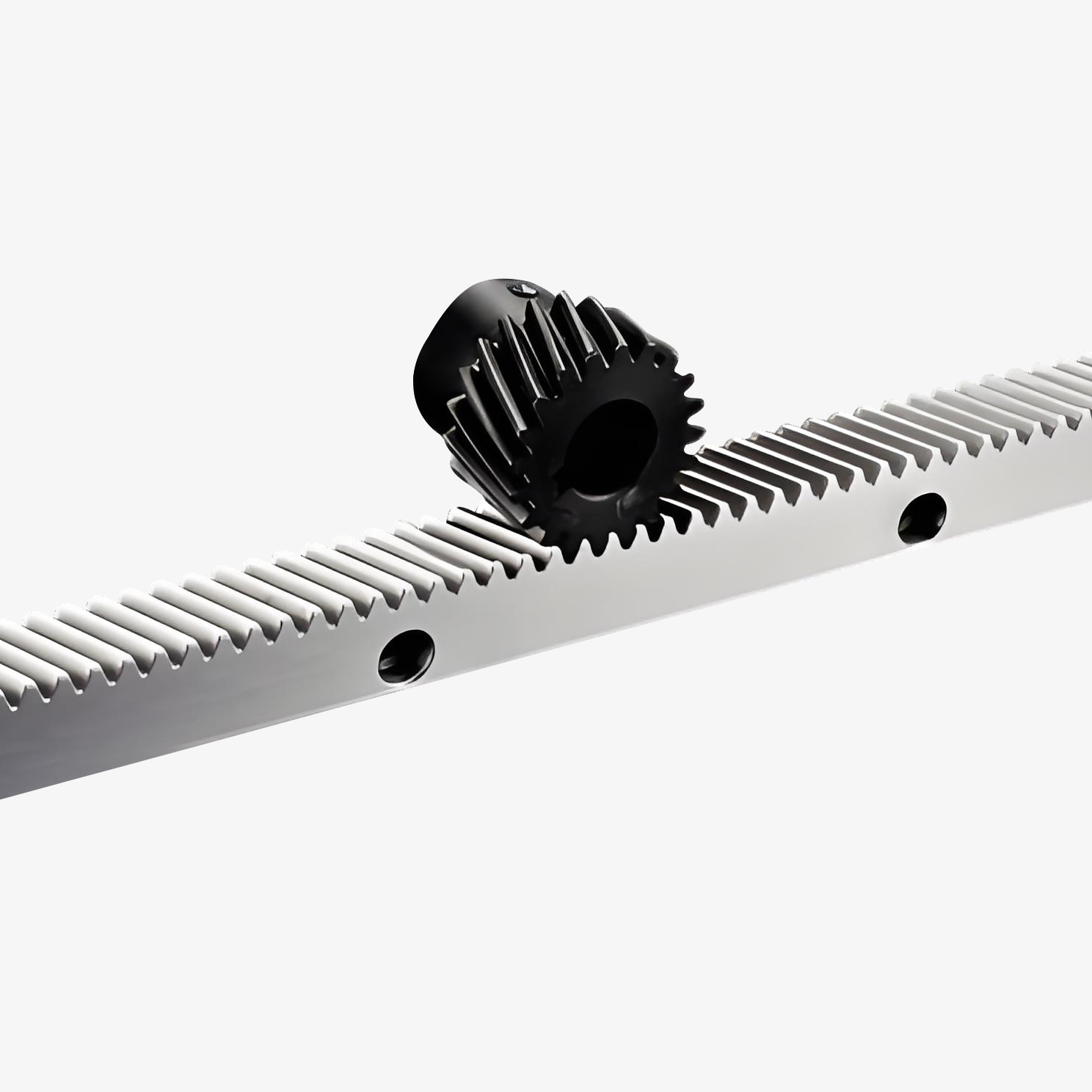No. 200 Gaoxin RD, Shanghua St, Lanxi, Zhejiang, P. R China
The Surface Heat Treatment Rack Pinion Gear is a precision-engineered ...
See DetailsThe Linear Guides Helical Gear Rack is a mechanical component used to convert rotary motion into linear motion with enhanced smoothness and efficiency. Its primary purpose is to support accurate, stable, and continuous movement in industrial automation systems, CNC machinery, and high-performance equipment requiring synchronized linear travel.

Unlike straight tooth racks, the helical gear rack features angled teeth, which mesh with a helical pinion to distribute load more evenly and reduce noise and vibration during operation. This makes it particularly suitable for environments where precision and quiet performance are required, such as in precision machining, packaging lines, and robotic systems.
Linear guides are typically integrated alongside helical racks to ensure that the moving component follows a straight and stable path. The guides serve to control alignment and reduce lateral movement, allowing the rack and pinion to focus solely on force transmission. When combined, these systems offer increased rigidity and reduced backlash, enabling smoother and more accurate movement over extended distances.
The helical rack is usually made from high-strength steel or alloy materials, often hardened or surface-treated to withstand repeated meshing and minimize wear. Proper lubrication and alignment further contribute to the system’s efficiency and lifespan.
The Linear Rack and Pinion is a mechanical system designed to convert rotational motion into linear displacement. It consists of a gear rack, which is a flat or slightly curved bar with teeth on one side, and a pinion, which is a round gear that meshes with the rack. As the pinion rotates, its teeth engage the rack, causing the rack to move in a straight line.
This mechanism is valued for its simplicity, reliability, and ability to transmit high forces, making it widely applicable across multiple industries. Linear rack and pinion systems are commonly found in gate automation, lift platforms, machine tools, and material handling systems. In each case, the system allows for precise control of position and movement, with minimal mechanical complexity.
The type of rack—whether straight or helical—affects performance characteristics such as noise level, load capacity, and smoothness. Straight racks are simpler and cost-effective, while helical racks offer quieter operation and smoother engagement due to their angled teeth.
Materials vary depending on the application. For example, steel or hardened alloys are used in industrial settings for durability under load, while plastic or aluminum options may be chosen for lighter-duty systems or environments where corrosion resistance and weight are considerations.
The Adjustment Mechanism of an Outdoor Gate Wheel plays a crucial role in maintaining gate alignment, smooth operation, and structural stability, especially in sliding or rolling gate systems installed in outdoor environments. Due to variations in terrain, weather, and ground settling, having an adjustable mechanism is essential for long-term functionality.
Typically, outdoor gate wheels are installed with height or angle adjustment features to compensate for irregular surfaces or wear over time. These adjustments can be made through threaded shafts, slotted mounting holes, or pivoting brackets, depending on the wheel design and gate configuration. By modifying the wheel position, the user can ensure that the gate remains level and in proper contact with the guiding surface.
In systems with heavy gates, preload tension adjustment may also be included to control how much force the wheel exerts against the ground. Too much pressure can bring about accelerated wear or track damage, while too little may cause instability. Proper adjustment balances load support with free movement.
Additionally, the adjustment mechanism may allow for lateral alignment correction, ensuring the gate does not drift or wobble along its track. This is particularly important for gates exposed to wind or uneven usage that can bring about frame distortion.